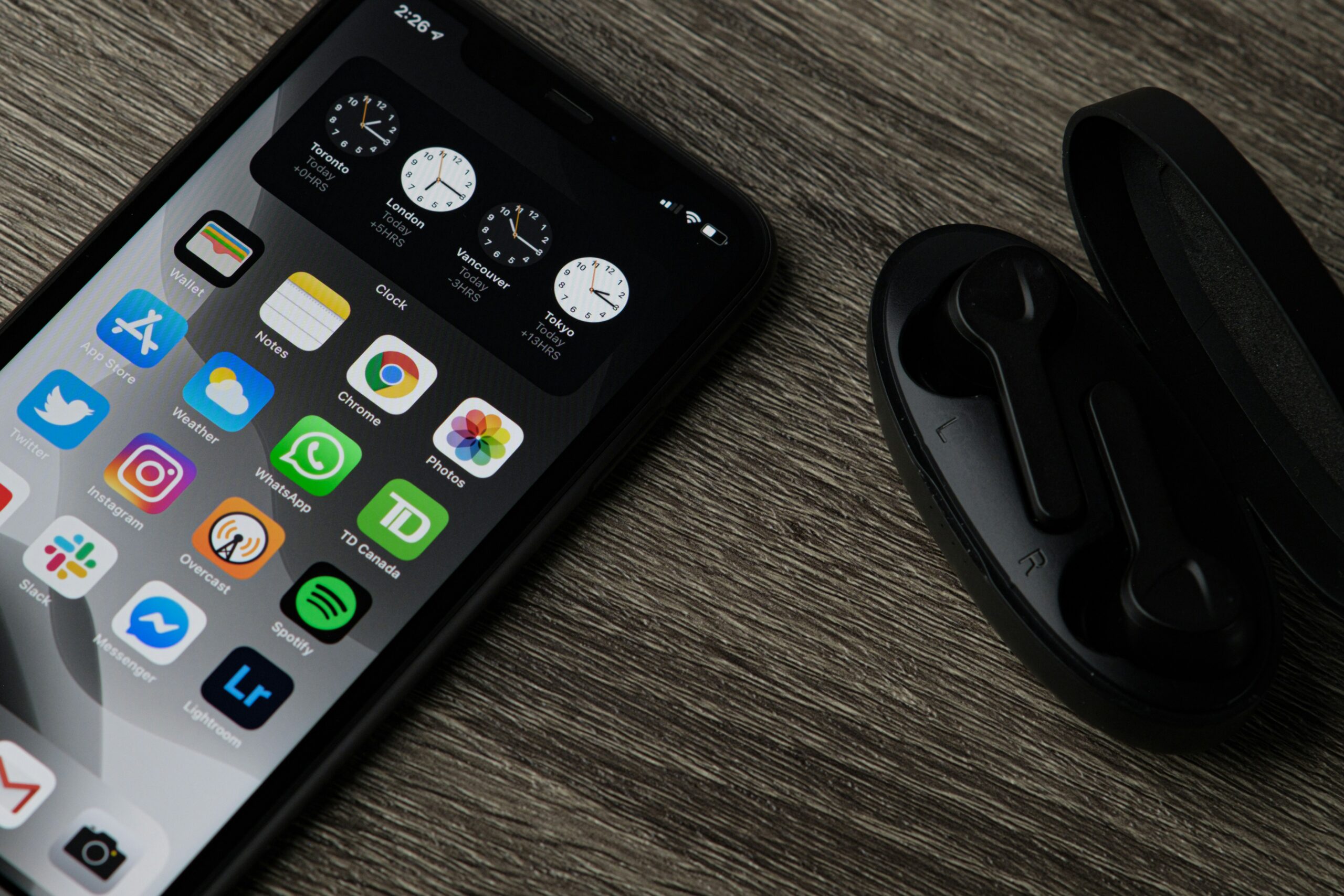We are not living in a time where smartphones have become an indispensable part of daily life, and understanding mobile marketing research techniques is paramount for digital marketers. With the exponential growth of mobile usage, conducting research tailored to mobile platforms is no longer optional but essential for all marketers who want to reach their audience.
Mobile devices have revolutionised consumer behaviour, influencing purchasing decisions, search patterns, and social media interactions. From browsing products to making purchases, from seeking information to engaging with content, smartphones have become the primary conduit through which consumers navigate the digital realm. This pervasive influence extends to shaping purchasing decisions, dictating search patterns, and redefining social media interactions.
Understanding Mobile Consumer Behaviour
A. How Mobile Usage Differs from Desktop: Mobile usage is characterised by shorter browsing sessions, on-the-go interactions, and an emphasis on convenience and immediacy.
B. Key Trends in Mobile Consumer Behaviour:
- Rise of Mobile Shopping: Consumers increasingly prefer shopping via mobile apps and websites, emphasising the need for seamless mobile experiences.
- Mobile Search Behaviour: Mobile search queries often exhibit local intent and conversational language, influencing SEO strategies.
- Social Media on Mobile: The majority of social media interactions now occur on mobile devices, shaping content consumption patterns and engagement metrics.
C. Impact of Mobile on Purchase Decisions: Mobile devices play a crucial role in every stage of the consumer journey, from product discovery to post-purchase engagement, making it imperative for marketers to understand and optimise for mobile.

Tools for Mobile Marketing Research
A. Google Analytics for Mobile Insights:
Google Analytics is a powerful tool that provides marketers with valuable insights into mobile traffic, user behaviour, and conversion rates. By leveraging Google Analytics, marketers can track various metrics such as mobile traffic sources, user demographics, engagement metrics, and conversion rates. This data enables marketers to gain a deep understanding of how users interact with their mobile website or app, identify areas for improvement, and optimise mobile performance accordingly. Google Analytics also offers features such as mobile-specific reports, event tracking, and conversion tracking, allowing marketers to measure the effectiveness of their mobile marketing efforts and make data-driven decisions to drive success.
B. Mobile App Analytics Platforms:
Mobile app analytics platforms like Firebase and Flurry offer comprehensive insights into user engagement, retention, and app performance. These platforms provide marketers with a wealth of data, including user demographics, session duration, in-app behaviour, and churn rates, allowing them to gain a deeper understanding of how users interact with their mobile app. By tracking key metrics such as user engagement, retention, and app performance, marketers can identify opportunities for improvement, optimise app features and functionality, and ultimately drive user satisfaction and loyalty. Mobile app analytics platforms also offer advanced features such as cohort analysis, funnel visualisation, and predictive analytics, enabling marketers to make informed decisions and maximise the success of their mobile app.
C. Social Media Listening Tools for Mobile:
Social media listening tools like Hootsuite and Sprout Social allow marketers to monitor conversations, track mentions and analyse sentiment across various social media channels, including mobile. These tools provide marketers with real-time insights into what users are saying about their brand, products, or industry on social media, enabling them to identify trends, monitor brand reputation, and engage with their audience effectively. By leveraging social media listening tools, marketers can track key metrics such as brand mentions, sentiment, and engagement levels, allowing them to measure the impact of their social media marketing efforts and make data-driven decisions to optimise their strategy. Social media listening tools also offer features such as keyword tracking, competitor analysis, and sentiment analysis, providing marketers with valuable insights to inform their social media marketing strategy and drive success.

D. Survey and Feedback Apps for Mobile Audience Insights:
Survey and feedback apps like SurveyMonkey and Typeform are invaluable tools for gathering feedback and insights from mobile users efficiently. These mobile-friendly survey tools enable marketers to create custom surveys, collect responses, and analyse data in real time, providing them with valuable insights into customer preferences, opinions, and satisfaction levels. By leveraging survey and feedback apps, marketers can gain a deeper understanding of their target audience, identify areas for improvement, and make data-driven decisions to optimise their marketing strategy. Survey and feedback apps also offer features such as customisable survey templates, respondent tracking, and data visualisation, enabling marketers to gather actionable insights and drive success in their mobile marketing efforts.

Mobile Heatmaps
A. Visualising User Interaction with Mobile Content: Heatmaps visually represent user interactions such as taps, scrolls, and clicks, providing valuable insights into user behaviour.
B. Interpreting Heatmap Data for User Behaviour Analysis: Marketers can analyse heatmap data to identify popular areas of engagement, user frustrations, and areas for improvement in mobile design.
C. Optimising Mobile Design Based on Heatmap Insights: By optimising layout, content placement, and call-to-action buttons based on heatmap insights, marketers can enhance user experience and drive conversions.
Utilising Mobile Surveys for Market Research
A. Benefits of Mobile Surveys: Mobile surveys offer higher response rates, real-time feedback, and the ability to reach users wherever they are, making them a powerful tool for market research.
B. Best Practices for Designing Mobile Surveys: Designing concise, mobile-friendly surveys with clear questions and intuitive navigation ensures higher completion rates and actionable insights.
C. Analysing and Interpreting Mobile Survey Data: Marketers can use mobile survey data to identify trends, preferences, and pain points among mobile users, informing product development and marketing strategies.
D. Case Studies: Successful Implementation of Mobile Surveys: Showcase examples of companies leveraging mobile surveys effectively to gather insights and drive business decisions.
Leveraging Mobile Search Data
A. Importance of Mobile Search Data in Market Research: Mobile search data offers crucial insights into user behaviour, preferences, and intent, guiding marketers in crafting effective digital marketing strategies. By analysing mobile search data, marketers can identify trending topics, popular keywords, and emerging consumer interests, enabling them to align their strategies with consumer needs and maximise their online presence in the mobile landscape.
B. Utilising Google’s Mobile Search Console: Google’s Mobile Search Console provides marketers with valuable data on mobile search performance, including mobile-friendly issues, click-through rates, and search queries. By leveraging this tool, marketers can identify and address mobile-friendly issues, optimise their content and keywords for mobile users, and improve their overall performance in mobile search results.
C. Keyword Research Strategies for Mobile: Keyword research specific to mobile search queries is essential for reaching and engaging mobile audiences effectively. Marketers should tailor their keyword research approach to reflect the unique characteristics of mobile search behaviour, including localised, conversational, and action-oriented queries, to optimise content and meet the needs of mobile users.
D. Analysing Search Trends on Mobile vs. Desktop: Comparing search trends between mobile and desktop platforms provides insights into user behaviour, preferences, and trends across devices. By analysing these trends, marketers can identify patterns, understand user intent, and optimise their marketing strategies to effectively engage audiences on both mobile and desktop platforms, maximising their online presence and driving results.
Social Media Listening
A. Harnessing Social Media Platforms for Market Insights: Social media listening allows marketers to monitor conversations, track brand mentions, and gauge audience sentiment in real time.
B. Monitoring Conversations and Trends on Mobile Devices: With the majority of social media interactions occurring on mobile devices, marketers must monitor and analyse mobile-specific conversations and trends.
C. Extracting Actionable Insights from Social Media Data: Analysing social media data helps marketers understand consumer preferences, sentiment, and emerging trends, guiding content strategies and brand messaging.
Analysing Mobile App Data
A. Importance of App Analytics for Market Research: App analytics play a crucial role in market research by providing insights into user behaviour, engagement metrics, and app performance. These insights are essential for optimising mobile app experiences and ensuring that the app meets the needs and preferences of its users. By analysing app analytics data, marketers can identify user trends, preferences, and pain points, allowing them to make informed decisions about app design, features, and functionality. Ultimately, app analytics enable marketers to enhance user satisfaction, increase engagement, and drive app success.
B. Key Metrics to Track in Mobile App Analytics: Tracking key metrics in mobile app analytics is essential for evaluating app performance and user satisfaction. Metrics such as downloads, active users, session duration, and retention rates offer valuable insights into how users interact with the app and whether they find value in it. For example, high download numbers may indicate initial interest in the app, but tracking active users and retention rates provides a more accurate measure of long-term engagement and user loyalty. By monitoring these key metrics, marketers can identify areas for improvement, measure the effectiveness of marketing campaigns, and optimise the app to better meet user needs and expectations.
C. Tools for Mobile App Analytics: Several platforms offer robust analytics tools specifically designed for tracking mobile app performance and user behaviour. Platforms like App Annie and Mixpanel provide comprehensive analytics dashboards that allow marketers to track various metrics, analyse user behaviour, and identify trends. These tools offer features such as user segmentation, event tracking, and funnel analysis, enabling marketers to gain deep insights into how users interact with the app and where improvements can be made. By leveraging these analytics tools, marketers can make data-driven decisions to optimise app performance, enhance user experience, and drive app success.
D. Improving User Experience Through App Data Analysis: Analysing app data is instrumental in improving user experience and maximising user satisfaction and retention. By examining user interactions, behaviours, and feedback within the app, marketers can identify usability issues, pain points, and areas for improvement. For example, analysing user navigation patterns may reveal bottlenecks or confusing interfaces that hinder user experience. Additionally, tracking user engagement metrics can help marketers understand which features are most valued by users and which may need enhancement or refinement. By leveraging app data analysis, marketers can make data-driven decisions to optimise features, personalise experiences, and ultimately enhance user satisfaction and retention, driving long-term app success.
Competitor Analysis in the Mobile Landscape
A. Identifying Mobile Competitors: Identify direct and indirect competitors operating in the mobile space, including mobile apps, websites, and social media platforms.
B. Tools and Techniques for Mobile Competitor Analysis: Utilise tools like SimilarWeb and App Annie to analyse competitors’ mobile strategies, including app performance, user engagement, and market share.
C. Benchmarking Your Mobile Strategy Against Competitors: Compare your mobile strategy against competitors to identify strengths, weaknesses, and opportunities for improvement, informing strategic decisions and optimisations.
Mobile marketing research is essential for understanding consumer behaviour, optimising user experiences, and driving marketing success in today’s mobile-centric world. As mobile technology evolves and consumer behaviour shifts, continuous research and adaptation are crucial for staying ahead in the competitive digital landscape. Also, by understanding mobile consumer behaviour, utilising relevant tools, and staying informed about emerging trends, marketers can effectively engage with mobile audiences, drive conversions, and stay ahead of the competition.













